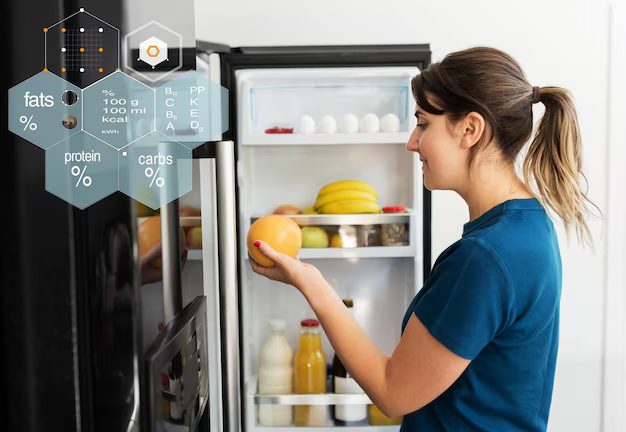Understanding the Energy Consumption of Side-by-Side Refrigerators: How Many Watts Do They Really Use?
When selecting appliances, particularly refrigerators, understanding their energy consumption is crucial not only for reducing electricity bills but also for minimizing environmental impact. Refrigerators run continuously, accounting for a significant portion of household energy use. Among various types, side-by-side refrigerators stand out due to their design and features. Let's explore how much power these appliances generally consume and what factors influence this consumption.
What Is a Side-by-Side Refrigerator?
Before diving into energy consumption, it's essential to grasp what differentiates side-by-side refrigerators from other models. These refrigerators have the freezer compartment lined up vertically next to the fresh food compartment, rather than above or below it. This design can make for easier storage access and organization, especially for wider items like pizzas and frozen dinners. Their sleek and modern design often includes additional features such as water dispensers and ice makers, which can impact overall energy usage.
Key Factors Affecting Energy Usage
Size Matters
The size of a refrigerator is one of the primary predictors of energy consumption. Larger models naturally consume more electricity due to the greater volume they need to cool. Side-by-side refrigerators typically range from 20 to 30 cubic feet, with larger capacities accommodating more groceries and thus requiring more power.
Age and Technology
Modern refrigerators generally consume less power than older models due to advancements in technology. Energy-efficient models are designed to use less electricity while maintaining optimal performance, often conforming to Energy Star standards.
Built-in Features
Side-by-side refrigerators often boast additional features such as ice makers and water dispensers, contributing to higher wattage requirements. Although convenient, these features draw extra power when in use, increasing total consumption.
Temperature Settings
The temperature at which a refrigerator is set can impact energy use. Colder settings force the compressor to work harder, using more energy. Keeping your refrigerator at the recommended settings—typically 37°F (around 3°C) for the refrigerator compartment and 0°F (-18°C) for the freezer—can strike a balance between food safety and energy efficiency.
How Many Watts Does a Side-by-Side Refrigerator Use?
Average Power Consumption
While individual refrigerator models vary, a typical side-by-side refrigerator's wattage can range from 150 to 800 watts during normal operation. This variation results from factors such as size, age, and included features. It's crucial to evaluate specific models for the most accurate data, often found in the manufacturer's product specifications.
Energy Calculation in Practical Terms
To calculate the annual energy usage of a refrigerator, you can use this formula:
[ ext{Annual Energy Use (kWh)} = ext{Average Wattage (watts)} imes ext{Hours Used Per Day} imes 365 / 1000 ]
For instance, a refrigerator consuming 500 watts used continuously equates to:
[ 500 , ext{watts} imes 24 , ext{hours} imes 365 / 1000 = 4380 , ext{kWh per year} ]
This rough calculation emphasizes just how significant the continuous running of refrigerators can be in terms of overall electricity consumption.
Tips to Optimize Energy Efficiency
- Keep Coils Clean: Regularly cleaning the coils at the back or beneath your refrigerator improves energy efficiency by aiding heat transfer.
- Ensure Proper Ventilation: Allow enough space around the refrigerator for proper air circulation.
- Check Door Seals: Ensure that door seals are intact and clean to prevent air leaks.
- Minimize Door Openings: Every time the refrigerator door is opened, warm air enters, causing the compressor to work harder.
- Defrost Regularly: If your fridge does not auto-defrost, regular defrosting can prevent ice buildup, which can strain the compressor.
🔑 Key Efficiency Tips Summary 📝
- 🔄 Regular Maintenance: Clean coils and check door seals.
- 📏 Proper Spacing: Allow for ventilation around the fridge.
- ❄️ Temperature Setting: Use recommended temperature levels for fridge and freezer.
- 🌬️ Minimize Air Leaks: Limit door openings and defrost when needed.
Understanding Energy Star Ratings
What Are Energy Star Ratings?
The Energy Star label identifies appliances meeting specific energy efficiency guidelines. Such appliances typically exceed government standards, providing ongoing electricity bill savings and lowering emissions throughout their lifecycle. Appliances labeled as Energy Star can consume 10–15% less energy compared to standard models.
Why Opt for Energy Star?
Choosing an Energy Star-rated refrigerator can result in immediate and long-term benefits, including:
- Cost Savings: Reduced electricity bills over the appliance's life.
- Environmental Impact: Lower carbon footprint due to efficient energy use.
- Enhanced Performance: Advanced technology often accompanies higher efficiency, leading to better appliance performance.
Exploring the Future of Refrigerators: Smart Technology
Integration with Technology
Smart refrigerators represent the future in home appliances, enabling features such as remote temperature control, internal cameras, and automatic inventory tracking, all of which can impact energy use. Though these conveniences can slightly increase power consumption, the ability to regulate and optimize conditions remotely might contribute to long-term energy savings.
Energy-Saving Innovations
Continued advancements in refrigeration technology aim to enhance energy efficiency further. Innovations like eco-friendly refrigerants, advanced compressor technology, and refined insulation materials offer a glimpse into refrigerators becoming increasingly sustainable.
Conclusion: Making Informed Decisions
Understanding the wattage consumption of side-by-side refrigerators is not just about calculating bills but also about contributing to broader sustainability goals. By considering factors such as size, energy efficiency ratings, and smart technology features, consumers can make informed choices that align with energy efficiency and ecological responsibility.
When selecting a refrigerator, it's essential to evaluate not just the upfront cost but also the appliance's lifetime energy consumption. As technology advances, embracing energy-efficient models can support both household budgets and the environment, proving that efficiency and performance need not be mutually exclusive. So, whether at a store or shopping online, keep in mind the long-term energy implications of your next refrigerator choice.
